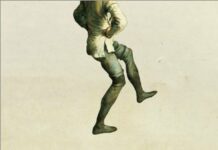
Ebook Info
- Published: 2004
- Number of pages: 300 pages
- Format: PDF
- File Size: 5.24 MB
- Authors: John Waller
Description
In Leaps in the Dark, John Waller presents another collection of revelations from the world of science. He considers experiments in which the scientists’ awareness was not perhaps as keen as they might have claimed in retrospect; he investigates the jealousy and opposition that scientific ideas can provoke; he celebrates the scientists who were wrong, but for very good reasons; and he demonstrates how national interest can affect scientists and their theories. The result is an entertaining and highly readable re-examination of scientific discoveries and reputations from the Renaissance to the twentieth century. The tales in Leaps in the Dark range across a wide historical field, from a seventeenth-century witch-finder, Joseph Glanvill, to Sir Robert Watson-Watt, the self-proclaimed ‘Father of radar’. Each story underscores the rich, fascinating complexity of scientific discovery. Writing in a clear and engaging style, and skilfully weaving history in with the science, John Waller brings these scientists to life, illustrating how their work and their discoveries influenced their careers and the wider world around them.
User’s Reviews
Reviews from Amazon users which were colected at the time this book was published on the website:
⭐I bought this book as I was researching the revisionists for the 200th anniversary of the birth of Semmelweis, and wanted to read the chapter. The section headed Miasma and maternity starts with the following sentence: “In 1844 Semmelwes qualified as a doctor in his native Hungary”.After discussing miasma theory, Waller writes,”It was at this critical juncture that Ignaz Semmelweis arrived in Vienna from his native Hungary”.I was aghast. Semmelweis transferred from the University of Pest to the University of Vienna in 1837 to study law at the request of his father, but after a year switched to medicine. He graduated doctor of medicine FROM THE UNIVERSITY OF VIENNA, not Hungary. There was an interesting reason for this. Hungary was under Austrian rule then, and the law was that if you graduated from one of the countries in the Austrian Empire could only practice in that country, but if one graduated from the Unniversity of Vienna the person could practice medicine in any of the countries in the empire. One is left wondering whether Waller has ever bothered to read a translation of Semmelweis’s book “The Etiology, Concept and Prophylaxis of Childbed Fever”.Waller describes the miasma theory of disease incorrectly. He describes it in terms of what we know as droplet infection: “most believed that the inhalation of poisonous airborne particles caused infections like childbed fever”. This is wrong. It is true that miasmas were thought to be particles but they were of decomposing particles. The theory was based on the following reasoning: decomposing things smelled bad, so things that smell bad must contain decomposing matter – a logical fallacy referred to as affirming the consequent. But the particles were not thought to cause infection by inhalation; they were responsible for ‘epidemics’ and they were thought to cause infection in ‘predisposed’ individuals, which explained why some people developed the disease and others did not.But there are many other ahistorical claims in the book about Semmelweis’s theory that are serious, and perpetuate the new myth people like Waller, Nuland, and Loudon have created about Semmelweis based on speculations that originated not with them but Erna Lesky, and that they then embellished. For example, Waller puts the horse before the cart when he claims that Semmelweis ‘stretched’ his theory to include all decomposing organic animal matter and not only cadaveric particles, as its cause, and then adds, that this new theory gained considerable strength when “in October and November 1848 (sic)” two patients were admitted, one with cancer of the uterus the other with an infected knee, who were the source of an outbreak of the nnfection. HISWTORICALLY WRONG AGAIN.The 2 cases Waller refers to were treated in 1847 not 1848, a few months after Semmelwes introduced not hand washing as is popularly stated by HAND DISINFECTION, and so immediately expanded his theory. He did not expand it theoretically in response to criticism and then serendipitously came across cases that supported the ‘stretched’ theory as Waller declares.Waller does not write well. He uses unnecessary adjectives, and peppers his sentences with qualifying clauses that are neither informative nor add flavor or character to what he is describing. So we get’some theorists blamed it on’ not “some blamed it on, and ‘Naturally, doctors had…’ not “Doctors had…”, and”Since hospitals of the period were generally pretty squalid places…..” not ‘Since hospitals were squalid then’It’s wordy writing: dry, slow moving, giving no flavor to what is said. The exception is Waller’s description of the political climate in Semmelweis’s day. Here what he says is accurate and well written; in fact, it is the only bit in the chapter worth reading.Given what Waller wrote about Semmelweis I have no intention of reading the rest of the book. Whether to do so or not and whether to buy the book or not I leave up to the reader. I would not give much credence to what Waller has to say.
⭐I bought this book particularly for the chapter on Robert Watson-Watt (‘The First Casualty of War) as part of my effort to research everything available about Chain Home and Bawdsey Radar. It’s pretty good, and correct in it’s criticism of Watt’s ruthless attempt to claim to be the ‘inventor of radar’ at the expense of his colleagues Arnold ‘Skip’ Wilkins and Edward ‘Taffy’ Bowen in particular. However, it is less fair I feel in some of the generalisations such as ‘the comparatively small size of the German equipment did not reflect technical inferiority.’ The smaller radar, while good for use in planes, never achieved the range (150 miles) of the short-wave CH radar operating on 22MHz. It was thus significantly inferior for coastal defence. Prior to the war, the chances of making VHF or microwave radar work for coastal defence, the chief UK requirement, were poor, given that valves for VHF were not available, either for low noise receivers or high power transmitters, and the development of the multi-cavity magnetron, which made high power microwave radar possible, was not in sight (it was later developed in England). ‘The Chain Home system can only be described as rudimentary’. No, the inovative use of crossed dipoles for bearing detection, of ground reflection as part of height detection, and of goniometer nulling betwee aerials for both measurements was ingenious, as was the use of an analog computer (the fruit machine) to calculate bearign and height while taking account of calibration factors. This is before we even talk about the ‘filter room’ concept, and integrated data gathering from fifty stations. A reaading of Wilkins’ memoir, along with other sources would have led to better conclusions I feel.
⭐This is a very good book, which impressed me very much. I have to get this rather bland positive statement in up front, as otherwise I’d start with what sounds like a negative remark, and this isn’t a negative review. John Waller relishes shattering our illusions. He’s the sort of person who tells you that Robin Hood, if he ever existed at all, was an unpleasant murderer with B.O. Or that Richard III was really a good, well-meaning king, and all the stuff about hump backs and princes in the Tower was fictional propaganda put about by the Lancastrians to justify their coup.The reason this sort of bubble bursting is painful is that we like our stories. We exist on stories – and the best popular science has a good story at its heart. But, and here’s where we fall into line with Waller, bearing in mind we are talking about science, we shouldn’t let our enthusiasm for a good story get in the way of the truth. Yes, let’s enjoy our history of science, and make it about real people, but not about mythical characters.Waller points out the strong tendency to push scientists, just as much as any other character in history, into black and white, stark contrasts. So we have the bad guys, the fools, like Joseph Glanvill, the member of the Royal Society who tried to prove that witches existed scientifically, or Max von Pettenkofer, who was so convinced that cholera didn’t spread by pure bacterial infection that he swallowed a whole flask of the bacteria (and survived). Not to mention the good guys, the heroes like Isaac Newton with his stunning flash of genius in performing the experiment that showed white light was composed of a mix of the colours separated by a prism.Reality, as you might guess, is rarely like that. Waller shows us how the much maligned Glanvill, for instance, was using the best scientific method of the day, even though he came up with the wrong result. And how Newton’s discovery was more a matter of him sticking to a theory despite experimental evidence, as it was only later that optical prisms could be made well enough to prove what he asserted.It’s nothing new to hear that science mostly consists of small, incremental and often very shaky steps forward, and is sometimes helped along by mistakes – but Waller really hammers this home in a way that hasn’t been done before. at least for a general audience. It’s absolutely amazing, if a little chastening, to see some legends of science prove to be just that – legends. Waller’s book doesn’t mean there aren’t big steps forward in science, or works of genius, even from individuals like Newton, but it does mean that we can see them in a more realistic light.Because this is such an important topic in understanding science and where it comes from, Leaps in the Dark is a highly recommended book. It mostly reads very well, too. It’s held back from five stars because it just occasionally suffers a little from academic pomposity, and in the end, the man’s a spoilsport. But a realistic spoilsport.
Keywords
Free Download Leaps in the Dark: The Making of Scientific Reputations 1st Edition in PDF format
Leaps in the Dark: The Making of Scientific Reputations 1st Edition PDF Free Download
Download Leaps in the Dark: The Making of Scientific Reputations 1st Edition 2004 PDF Free
Leaps in the Dark: The Making of Scientific Reputations 1st Edition 2004 PDF Free Download
Download Leaps in the Dark: The Making of Scientific Reputations 1st Edition PDF
Free Download Ebook Leaps in the Dark: The Making of Scientific Reputations 1st Edition


